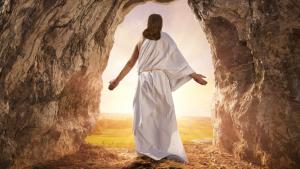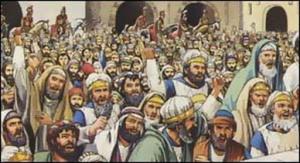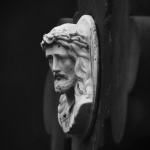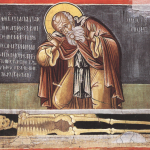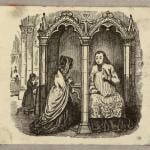
Science does not easily accept as real an event that breaks the laws of nature. There may be gaps in our understanding, but once we do understand how something works, we figure it will work that way all the time. An apparently miraculous exception is, to scientists, only a challenge to keep on looking for a rational explanation. They want to investigate–if not the event then the experience or the report. For Christians some of that rational activity may take the form of in-depth study of the Bible’s miracle stories.
Theology should not easily jump from miracle stories to God. Not only is it an unlikely path, it’s likely to lead to the wrong God. At least the premise of this series is that Jesus’ humanity tells us what God is like. Here I report on some of the analyzing of miracle stories that Catholic theologians have done.
Ninth in the series “Stories of Jesus and the Character of God.” In this series I probe what historical Jesus scholars can say about the humanness and the earthly career of Jesus—beyond which historical research cannot go. The ultimate objective is to let this Jesus reveal the character of God. Contents and links to other entries in the series here.
One theologian who has studied the miracle stories is Walter Kasper, a cardinal in the Church. I have been and will continue relying on his book Jesus, The Christ. (89-98)
The miracle genre
Kasper identifies what he calls the “genre” of miracle stories in the Bible and ancient non-Christian literature. In non-Christian literature the miracle story has a number of identifiable features. There’s a three-part pattern: The story stresses the difficulty the healer faces, including the failure of previous attempts at a cure. The cure itself is related. Finally the story confirms the cure with accounts of witnesses’ amazement.
Some of the New Testament’s miracle stories exhibit these same features. It’s easy to see why a storyteller would follow literary conventions in telling a story. It’s less likely that historical reality would follow the same conventions. So scholars tend to be skeptical of a story in the Bible when it follows too closely the “miracle story” genre.
Some of the Bible’s miracle stories don’t follow this miracle-story pattern. One of these tells us that Jesus healed Peter’s mother-in-law. The story reads like somebody simply remembering something that happened. For that reason it seems likely that it did happen more or less as told. But what exactly happened, and what does God have to do with it?
An interventionist God?
Kasper finds theologically unacceptable the idea of an interventionist God, one who imposes changes on the created world from the outside. But he also thinks Jesus’ reputation as miracle worker must have had a basis in fact. Some things Jesus did must have astounded his contemporaries. Would a 21st century scientist seeing the same things be convinced that laws of nature were broken? In the homey scene with Peter’s mother-in-law, it’s easy to imagine the excitement of company arriving, especially when it’s Jesus, effecting a cure. It could have a natural explanation.
For first-century Judeans a miracle was simply a sign that God was at work in a special way. And God was always at work. The idea of a law of nature to be broken was not part of their mindset. Kasper thinks it’s not necessarily part of the meaning of miracle in the Bible.
Analyzing miracle stories
Kasper’s analysis of miracle stories continues along the following lines:
- On the number of miracles: From an earlier layer of the Jesus tradition to another later one (e.g., from Mark to Matthew and Luke), we see exaggeration in the quantity and quality of miracles. There are more of them and they are more amazing. It’s logical to suppose that exaggeration was also operating in oral tradition before the Gospels were written. “This reduces the material on which the miracle reports are based very considerably.” (Jesus, the Christ, p. 89, note)
- Early historical Jesus scholars thought they could attribute all the miracles to later, legendary additions to stories about Jesus. Kasper says that some, but not all, miracle stories are like this. One whole set of miracles that he thinks are later additions are the nature miracles. He thinks of them as “projections of the experiences of Easter back into the historical life of Jesus.” They would include “the stilling of the storm, the transfiguration, Jesus’ walking on the lake, the feeding of the four (or five) thousand, and the miraculous draught of fishes.” It would also include raisings from the dead. (p. 90)
- Still, Kasper says, “There can scarcely be a single serious exegete who does not believe in a basic stock of historically certain miracles of Jesus.” Jesus must have “performed extraordinary actions, which amazed his contemporaries.” (p. 90-91)
- What to make of these actions is the question. Could there be a psychosomatic explanation? Kasper mentions that possibility and then gets into something more theological: “God can never replace this-worldly causality. If he were on the same level as this-worldly causes, he would no longer be God but an idol. If God is to remain God, even his miracles must be thought of as mediated by created secondary [i.e., this-worldly] causes.” (92)
- Otherwise, a miracle would be “like a meteor from another world: an alien body completely unassimilable to our world.”
- Such an event “would be of no profit to theology either. A miracle of this sort would compel belief, and would remove its character of free choice.” (92) Even more boldly: “A divine intervention in the sense of a directly visible action of God is theological nonsense.” (95)
Miracles and the relation between God and world
Kasper seems to be saying God does not intervene obviously in history. I would agree about the obviously part. The path to doubt – even sincere doubt – is always open. Actions of God are not directly visible or scientifically provable. In the face of phenomena like Lourdes or Guadalupe and the Church’s strict procedures for verifying miracles, I have to say I hold to that idea rather tentatively.
At the same time, I do believe in an invisibly intervening God, except I would rather say an interrupting God. Jesus didn’t come because God wants to keep everything as it was. Certainly not in our human worldly ways, and perhaps also not in the natural world.
Doctrines concerning special unseen events, Mary’s Immaculate Conception and virginal conceiving and Jesus’ Resurrection, all proclaim God’s activity in the world. What does that say about the world? What does the doctrine of creation, another hidden but presumably decisive activity, say about the world? Is the world merely God’s object, subject to divine whim? Our scientific minds require more integrity for the universe than that. Does science require a world that has nothing to do with God?
Now the miracle stories in the Bible make me face the large question of the relation between God and the world. But that waits for another post.
Image credit: Moore Perspective, via Google Images



